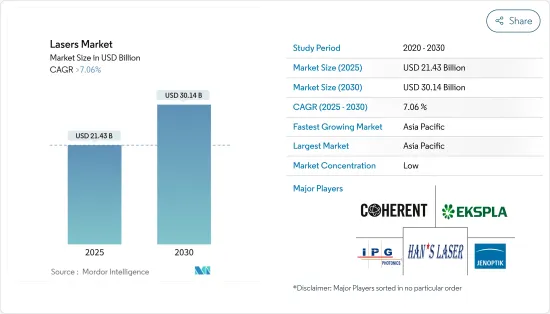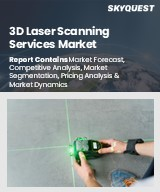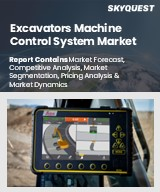
|
시장보고서
상품코드
1687344
레이저 : 시장 점유율 분석, 산업 동향 및 통계, 성장 예측(2025-2030년)Lasers - Market Share Analysis, Industry Trends & Statistics, Growth Forecasts (2025 - 2030) |
||||||
레이저 시장 규모는 2025년에 214억 3,000만 달러로 추정되며, 예측 기간 중(2025-2030년) CAGR은 7.06% 이상으로, 2030년에는 301억 4,000만 달러에 달할 것으로 예측됩니다.

주요 하이라이트
- 빠르게 진화하는 전자 산업은 부품 및 어셈블리 제조에서 정확성, 소형화 및 복잡성을 보장하기 위해 레이저 기술에 의존하고 있습니다. 레이저는 비접촉식, 고정밀 방식으로 전자 부품을 절단, 마킹 및 구조화합니다. 이를 통해 재료 낭비를 줄이고 잠재적인 손상을 최소화할 수 있습니다. 이러한 능력은 전자기기에서 섬세한 재료와 복잡한 디자인을 다룰 때 특히 중요합니다.
- 또한 레이저 기술은 전자 분야의 마이크로 일렉트로닉스 및 부품 제조에 있으며, 매우 중요한 역할을 합니다. 이 기술은 소자의 소형화를 촉진하고, 높은 생산 수율을 보장하며, 현대 전자제품에 필수적인 복잡한 회로 설계를 가능하게 합니다.
- 혁신적인 전자기기에 대한 수요 증가, 전기자동차의 보급 급증, 다양한 분야에 걸친 인공지능의 광범위한 통합 등의 요인이 칩 설계 및 제조 시장을 주도하고 있습니다. 이러한 모멘텀은 레이저 시장에 성장 기회를 제공합니다.
- 그러나 중소기업과 스타트업은 예산이 부족한 경우가 많으며, 레이저 마킹 머신에 필요한 고가의 초기 투자로 인해 어려움을 겪고 있습니다. 이러한 기계는 레이저 배치, 필요한 전력, 마킹 영역의 크기, 추가 기능에 따라 영향을 받기 때문에 초기 비용이 많이 듭니다. 결과적으로 이러한 높은 초기 비용은 시장 성장을 저해할 수 있습니다.
- 시장은 용접 중 실시간 품질 모니터링을 가능하게 하는 AI 강화 레이저 시스템의 채택으로 변화하고 있습니다. 이러한 혁신은 생산 비용을 절감하고 제품 품질을 향상시켜 예측 기간 중 전체 시장의 성장을 지원할 것입니다.
레이저 시장 동향
레이저 센서는 전자 및 항공 분야의 새로운 프론티어입니다.
- 전자제품 제조업체들은 다양한 용도로 레이저 센서를 활용하고 있습니다. 여기에는 제품 공차 확보, 선별 프로세스 간소화, 부품 인식 시스템 강화 등이 포함됩니다. 레이저 센서는 압력 변환기의 다이어프램 변위를 측정하고, 인쇄회로기판의 특징을 검사하고, 보청기 어셈블리의 하우징 프로파일을 측정하는 등 다양한 용도로 사용됩니다. 전자 제조 산업에서 인기를 얻고 있는 센서 유형에는 공초점 센서, 공초점 변위 센서, 삼각 측량 센서, 레이저 도플러 센서(LDS) 등이 있습니다.
- 예를 들어 2024년 1월 Keyence는 공초점 변위 센서 CL-3000 시리즈를 확장했습니다. 공초점 변위 센서는 고정밀 거리 측정으로 잘 알려져 있으며, 자동화된 품질관리에서 매우 중요한 역할을 합니다. 이 센서는 반사광의 강도를 분석하여 물체까지의 거리를 측정합니다. 이를 위해 센서는 레이저 광을 조사하고 그 후 빔을 분할하여 측정합니다.
- 항공 분야는 끊임없이 기술의 한계를 넓혀가고 있으며, 타의 추종을 불허하는 정밀도와 해상도를 요구하고 있습니다. 비행시간과 같은 기술은 장거리 레이저 거리 센서를 활용하여 빛의 통과 시간을 측정하고 거리를 결정하기 위해 일정한 광속을 채택하고 있습니다. 또한 항공 산업은 고해상도 시스템에 대한 의존도를 높이고 있으며, 이는 LiDAR 시스템의 중요성이 커지고 있음을 지원합니다. 한편, 무인항공기(UAV)의 발전으로 항공용도가 급증하고 있습니다.
- 예를 들어 JOUAV는 2024년 3월 드론 전용으로 설계된 최신 LiDAR 센서 'JoLiDAR-1000'을 발표했습니다. 이 발표로 JOUAV의 고성능 저가형 LiDAR 센서 제품군이 강화되어 GIS, 측량, 송전선 정밀 검사 등 민간 무인항공기(UAV)의 용도가 한층 더 진화할 것으로 보입니다.
- 그 결과, 레이저 기반 센서에 대한 수요 증가와 기술 혁신에 힘입어 다양한 최종 사용 분야에서 강력한 발전이 예측 기간 중 시장 성장을 가속할 것으로 예측됩니다.
아시아태평양이 크게 성장
- 중국이 세계 레이저 시장을 선도하는 것은 강력한 인프라, 잘 구축된 산업 생태계, 기술 개선에 대한 끊임없는 노력 덕분입니다. 이 시장은 자동차, 가전제품, 제조업, 재생에너지 산업에 크게 기여한 것으로 유명합니다. 자동화 및 디지털화가 진행됨에 따라 중국의 레이저 기반 솔루션에 대한 수요는 Made in China 2025와 같은 주요 구상에 힘입어 빠르게 발전할 것으로 예측됩니다.
- 인도의 제조업은 다양한 구상과 유리한 정책으로 인해 빠르게 성장하고 있으며, Make in India 구상은 인도를 세계 제조업의 중심지로 자리매김하고 인도 경제에 대한 국제적인 찬사를 받고 있습니다. 이 프로그램은 국내 제조 역량을 향상시키고, 해외 투자를 유치하고, 전국에 고용 기회를 창출하는 것을 목표로 하고 있으며, 2024년 인도는 세계 5위의 제조 강국이 될 것이며, 이는 세계 제조 산업에서 인도 제조업의 위상이 높아지는 것을 반영하는 것입니다.
- 첨단 산업, 의료 및 기술 생태계에 대한 일본의 강력한 통합으로 일본은 세계 레이저 시장에서 뛰어난 진입자로서의 입지를 확립하고 있습니다. 세계 제조업, 특히 자동차, 의료 및 전자 산업에서 일본의 중요한 역할은 그 중요성을 입증하고 있습니다. 정밀 엔지니어링과 기술 혁신으로 유명한 일본은 세계 레이저 산업에서 중요한 시장으로 남아 있습니다.
- 노동 임금 상승과 제조업 고용 감소에 직면한 한국에서는 생산 공정에 레이저 기반 로봇의 도입이 진행되고 있습니다. 이러한 전환은 기존 인력을 대체할 뿐만 아니라 제조 효율성과 생산성을 향상시킬 수 있습니다. 그 결과, 한국은 로봇 밀도의 세계 리더로 부상하며 산업 자동화 및 기술 진보에 대한 노력을 보여주고 있습니다.
- 기타 아시아태평양의 레이저 시장은 강력한 성장세를 보이고 있습니다. 이러한 급격한 성장의 주요 요인은 이 지역의 전자 및 자동차 제조 거점 및 소비자의 구매력 증가에 기인합니다. 또한 스마트폰의 보급이 가속화되고 비즈니스가 디지털화됨에 따라 다양한 레이저 용도에 대한 수요가 증가하고 있으며, 특히 가전 및 자동차 분야가 활발하게 성장하고 있습니다. 기타 아시아태평양에는 인도네시아, 싱가포르, 호주 등이 포함됩니다.
레이저 산업 개요
대형 벤더와 중소규모의 지역 업체들이 시장을 형성하고 있으며, 각 업체들은 각각의 고객들을 대상으로 사업을 전개하고 있습니다. 이들 업체들은 연구, 혁신, 제품 개발을 주요 성장 전략으로 삼고 있으며, 시장에서의 입지를 강화하고 있습니다.
자본 집약적인 시장 특성은 중소기업이 높은 퇴출 장벽에 직면하고 종종 대기업의 인수로 이어진다는 것을 의미합니다. 이는 적당한 기업 집중과 함께 경쟁 기업 간의 적대적 관계를 증폭시키고 있습니다.
시장이 인수 및 합병을 특징으로 하는 통합 단계로 접어들면서 주목할 만한 움직임이 이미 일어나고 있습니다. 또한 시장의 주요 기업은 초고속 레이저의 새로운 용도를 개발하기 위해 지역 거점을 확장하고 생태계 파트너와 협력하고 있습니다.
기타 혜택
- 엑셀 형식의 시장 예측(ME) 시트
- 3개월 애널리스트 지원
목차
제1장 서론
- 조사의 전제조건과 시장 정의
- 조사 범위
제2장 조사 방법
제3장 개요
제4장 시장 역학
- 촉진요인
- 일렉트로닉스 산업에서 레이저 시스템의 수요 증가
- 인더스트리 4.0 및 스마트 제조 프랙티스의 채택 증가
- 억제요인
- 높은 설비투자
- 업계 밸류체인 분석
- 업계의 매력 - Porter's Five Forces 분석
- 공급 기업의 교섭력
- 바이어의 교섭력
- 신규 진출업체의 위협
- 대체품의 위협
- 경쟁의 정도
제5장 시장 세분화
- 유형별
- 파이버 레이저
- 다이오드 레이저
- CO/CO2 레이저
- 고체 레이저
- 기타
- 용도별
- 통신
- 재료 가공
- 의료·화장품
- 리소그래피
- 연구개발
- 군·방위
- 센서
- 디스플레이
- 기타 용도(마킹, 광학 스토리지, 인쇄)
- 지역별
- 아시아
- 중국
- 인도
- 일본
- 한국
- 호주·뉴질랜드
- 호주·뉴질랜드
- 북미
- 미국
- 캐나다
- 멕시코
- 유럽
- 독일
- 영국
- 프랑스
- 이탈리아
- 남미
- 중동
- 아시아
제6장 경쟁 구도
- 기업 개요
- Coherent Corp.
- EKSPLA
- Hans Laser Technology Industry Group Co., Ltd.
- IPG Photonics Corporation
- Jenoptik AG
- Keyence Corporation
- Lumentum Holdings Inc.
- Lumibird SA
- Maxphotonics Co., Ltd.
- nLIGHT, Inc.
- Novanta, Inc.
- TRUMPF SE+Co. KG
- Wuhan Raycus Fiber Laser Technologies Co. Ltd
- M&A, 합병사업, 제휴, 협정
- 시장 점유율 분석
- 주요 기업의 전략
제7장 시장 기회와 향후 동향
- LiDAR 기술
The Lasers Market size is estimated at USD 21.43 billion in 2025, and is expected to reach USD 30.14 billion by 2030, at a CAGR of greater than 7.06% during the forecast period (2025-2030).

Key Highlights
- The rapidly evolving electronics industry relies on laser technology to ensure precision, miniaturization, and complexity in manufacturing components and assemblies. Lasers cut, mark, and structure electronic parts using a non-contact and highly accurate approach. This reduces material waste and minimizes potential damage. Such capabilities are especially crucial when handling sensitive materials and intricate designs in electronic devices.
- Additionally, laser technology is crucial in producing microelectronics and components in the electronics sector. This technology facilitates the miniaturization of devices, guarantees high production yields, and allows for intricate circuit designs vital to contemporary electronics.
- Factors such as the rising demand for innovative electronics, the surge in electric vehicle adoption, and the widespread integration of artificial intelligence across various sectors drive the chip design and fabrication market. This momentum is creating growth opportunities for the laser market.
- However, small businesses and startups, often constrained by tight budgets, face challenges due to the high initial investment required for laser marking machines. These machines have a significant upfront cost, influenced by laser placement, power requirements, marking area size, and added functionalities. As a result, this steep initial expense could stifle market growth.
- The market has been transformed by adopting AI-enhanced laser systems, enabling real-time quality monitoring during welding. This innovation reduces production costs and enhances product quality, supporting the overall market growth during the forecast period.
Laser Market Trends
Laser Sensors to be the New Frontier in Electronics and Aviation
- Electronic manufacturers are increasingly turning to laser sensors for a variety of applications. These include ensuring product tolerances, streamlining sorting processes, and enhancing part recognition systems. Laser sensors measure diaphragm displacement in pressure transducers, inspect features on printed circuit boards, and gauge housing profiles for hearing aid assemblies. Among the types of sensors gaining traction in electronic manufacturing are confocal sensors, confocal displacement sensors, triangulation sensors, and Laser Doppler Sensors (LDS).
- For instance, in January 2024, 'Keyence expanded its CL-3000 Series of Confocal Displacement Sensors. Confocal displacement sensors, known for their high-precision distance measurements, play a pivotal role in automated quality control. These sensors gauge the distance to an object by analyzing the intensity of reflected light. To achieve this, the sensor emits a laser light and subsequently splits the beam.
- The aviation sector consistently pushes technological boundaries, demanding unparalleled accuracy and resolution. Technologies like Time-of-Flight leverage long-range laser distance sensors, measuring light's transit time and employing the constant speed of light to determine distances. Moreover, the aviation industry's growing reliance on high-resolution systems underscores the rising significance of LiDAR systems. Meanwhile, the evolution of unmanned aerial vehicles (UAVs) is witnessing a surge in aerial applications.
- For instance, in March 2024, JOUAV unveiled its newest LiDAR sensor, the JoLiDAR-1000, designed specifically for drones. This launch bolsters JOUAV's already impressive range of high-performance, budget-friendly LiDAR sensors, furthering the evolution of civilian unmanned aerial vehicle (UAV) uses, including GIS, surveying, and meticulous power line inspections.
- As a result, robust advancements across diverse end-use sectors are poised to propel market growth during the forecast period, driven by increasing demand and innovation for laser-based sensors.
Asia Pacific to Register Major Growth
- China leads the world laser market in large part because of its strong infrastructure, established industrial ecosystem, and relentless focus on technological improvements. The market is distinguished by its substantial contributions to the automobile, consumer electronics, manufacturing, and renewable energy industries. As automation and digitalization increase, China's need for laser-based solutions is anticipated to develop rapidly, supported by major initiatives like "Made in China 2025".
- India's manufacturing sector is witnessing rapid growth, driven by various initiatives and favorable policies. The 'Make in India' initiative has positioned the nation as a global manufacturing hub, garnering international acclaim for its economy. This program aims to boost domestic manufacturing capabilities, attract foreign investments, and create employment opportunities across the country. In 2024, India ascended to become the world's fifth-largest manufacturing nation, reflecting its growing prominence in the global manufacturing landscape.
- Japan's strong integration into advanced industrial, medical, and technological ecosystems establishes it as a distinguished participant in the global laser market. Its critical role in global manufacturing, particularly in the automotive, healthcare, and electronics industries, underpins its significance. Renowned for its precision engineering and innovation, Japan remains a vital market within the global laser industry.
- South Korea, facing rising labor wages and a dip in manufacturing employment, is increasingly adopting laser-based robotics in its production processes. This transition not only replaces traditional labor but also enhances efficiency and productivity in manufacturing. As a result, South Korea has emerged as one of the global leaders in robot density, showcasing its commitment to industrial automation and technological advancement.
- Robust growth characterizes the laser market in the Rest of Asia-Pacific region. This surge is primarily attributed to the region's electronics and automobile manufacturing stronghold and rising consumer purchasing power. Furthermore, as smartphone adoption accelerates and businesses digitize, there's a heightened demand for various laser applications, especially in the flourishing consumer electronics and automotive sectors. The Rest of the Asia-Pacific region consists of countries like Indonesia, Singapore, and Australia, under the scope of the study, where the studied market is gaining considerable traction.
Laser Industry Overview
Large vendors and smaller regional players populate the market, each catering to their respective clientele. These vendors emphasize research, innovation, and product development as key growth strategies, bolstering their market presence.
The capital-intensive nature of the market means that smaller companies face heightened exit barriers, often leading to acquisitions by larger firms. This, combined with moderate firm concentration, amplifies the competitive rivalry.
Notable moves have already been made as the market heads towards a consolidation phase marked by acquisitions and mergers. Additionally, major players in the market are expanding their regional footprint and collaborating with ecosystem partners, delving into novel applications for ultrafast lasers.
Additional Benefits:
- The market estimate (ME) sheet in Excel format
- 3 months of analyst support
TABLE OF CONTENTS
1 INTRODUCTION
- 1.1 Study Assumptions and Market Definition
- 1.2 Scope of the Study
2 RESEARCH METHODOLOGY
3 EXECUTIVE SUMMARY
4 MARKET DYNAMICS
- 4.1 Drivers
- 4.1.1 Increasing Demand for Laser Systems from the Electronics Industry
- 4.1.2 Increasing Adoption of Industry 4.0 and Smart Manufacturing Practices
- 4.2 Restraints
- 4.2.1 High Capital Investment
- 4.3 Industry Value Chain Analysis
- 4.4 Industry Attractiveness - Porter's Five Forces Analysis
- 4.4.1 Bargaining Power of Suppliers
- 4.4.2 Bargaining Power of Buyers
- 4.4.3 Threat of New Entrants
- 4.4.4 Threat of Substitute Products and Services
- 4.4.5 Degree of Competition
5 MARKET SEGMENTATION
- 5.1 Type
- 5.1.1 Fiber Lasers
- 5.1.2 Diode Lasers
- 5.1.3 CO/CO2 Lasers
- 5.1.4 Solid State Lasers
- 5.1.5 Other Types
- 5.2 Application
- 5.2.1 Communications
- 5.2.2 Materials Processing
- 5.2.3 Medical and Cosmetics
- 5.2.4 Lithography
- 5.2.5 Research and Development
- 5.2.6 Military and Defense
- 5.2.7 Sensors
- 5.2.8 Displays
- 5.2.9 Other Applications (Marking, Optical Storage, Printing)
- 5.3 Geography
- 5.3.1 Asia
- 5.3.1.1 China
- 5.3.1.2 India
- 5.3.1.3 Japan
- 5.3.1.4 South Korea
- 5.3.1.5 Australia and New Zealand
- 5.3.2 Australia and New Zealand
- 5.3.3 North America
- 5.3.3.1 United States
- 5.3.3.2 Canada
- 5.3.3.3 Mexico
- 5.3.4 Europe
- 5.3.4.1 Germany
- 5.3.4.2 United Kingdom
- 5.3.4.3 France
- 5.3.4.4 Italy
- 5.3.5 South America
- 5.3.6 Middle East
- 5.3.1 Asia
6 COMPETITIVE LANDSCAPE
- 6.1 Company Profiles
- 6.1.1 Coherent Corp.
- 6.1.2 EKSPLA
- 6.1.3 Hans Laser Technology Industry Group Co., Ltd.
- 6.1.4 IPG Photonics Corporation
- 6.1.5 Jenoptik AG
- 6.1.6 Keyence Corporation
- 6.1.7 Lumentum Holdings Inc.
- 6.1.8 Lumibird SA
- 6.1.9 Maxphotonics Co., Ltd.
- 6.1.10 nLIGHT, Inc.
- 6.1.11 Novanta, Inc.
- 6.1.12 TRUMPF SE + Co. KG
- 6.1.13 Wuhan Raycus Fiber Laser Technologies Co. Ltd
- 6.2 Mergers and Acquisitions, Joint Ventures, Collaborations, and Agreements
- 6.3 Market Share Analysis
- 6.4 Strategies Adopted by Leading Players
7 MARKET OPPORTUNITIES AND FUTURE TRENDS
- 7.1 LiDAR Technology



















